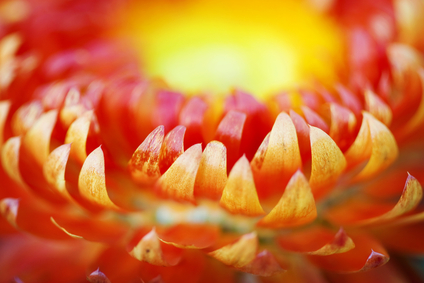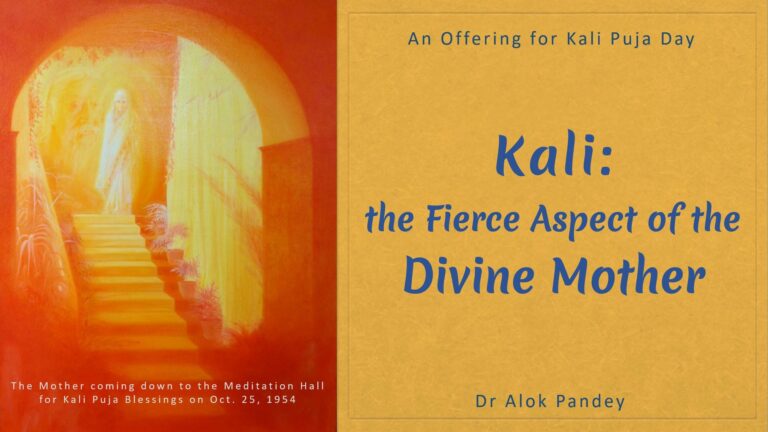An audio recording and a transcript of a talk, followed by a recitation from the Savitri (Book Two Canto 8)

The Labours of the Gods (The Five Purifications)
Nowadays we hear much of brain wash. The other day, instead of brain-washing, I spoke of brain-ignition. That is to say, for a total reconstitution of the brain, for a new building of the physique of the new man, one has to transform the cells of grey matter into particles of fire, packets of burning energy. I said, the cranium being the control-room of physical existence and the brain being the controlling agent — the brain extending its range down the spinal column to its end at the last vertebra — this is the element that has to be treated and reorganised first and foremost, if a physical reorganisation of human nature and behaviour is to be achieved. I explained — tried to explain — that this being the physical or material field, the first of the elements — kṣiti or earth or matter — the God presiding over it, Fire, has to be invoked and its especial working carried out here.
The brain thus is the controller-general of the whole physical system of the human body. In particular, however, it is the controller and regulator of the physical mind and the senses (the six indriyas of Indian psychology). This is the province of the basic earth principle, this range of material matter over which the Fire is the presiding deity. There are, however, other provinces and units, co-lateral to the brain system and having special functions of their own. First of all, at the bottom of the scale, or rather the first step upward in the scale, — that is, after the vertebral pedestal — is the abdominal system which consists, as we know, of the three main operations: (i) digestion, (ii) evacuation, and (iii) generation, comprising, in other words, the stomach, the intestines, the liver and the spleen, the kidneys, the bladder, and finally, the sex glands. The glands indeed, here in this domain, are the operative agent: and they have a special way of operation, namely, washing. If fire controls the most material, the earth-principle, it is water, apas, that is the god in this region of the vital functions. The Vedas speak of the purifying streams of the Sindhus and the Srotas; they speak of the underground stream of rasa which Sarama, the Hound of Heaven, crossed to come over to our earth. Water, in fact, does the work appropriate to this region. It is the vital region in man and consists of functions attached to the vital activities. The vital in its ordinary and normal functions means desires and attachments, hunger and thirst, ties and bondages, urges and demands—these have to be cleared and washed out if there is to be healthy strength in the system, washed by spraying the pure vital fluid. Physiologically the enzymes and endocrine secretions are the physical formations or outer formulations of the hidden vital fluid. This indeed is the function of the deity, Soma, Pawamana Soma, the flowing stream of Delight, who in effect is the true presiding godhead here. For it is this section of the body that is the stage for our whole world of enjoyment—for the play of all our physical delights as well as of all our ailments and diseases. Purified, it is the giver of health and happiness, leading ultimately to that Supreme Delight which is immortality, Life transfigured.
Above and next to this region of the viscera, on the other side of the diaphragm, is the region of the thorax, the chest cavity. It contains the most important of all human organs, the heart and the lungs, which means the respiratory and the circulatory systems, extending into the solar plexus; and the power that controls it is that of the third element Tejas, the pulsating, radiant energy. It is the energising heat, the warmth of will and aspiration, concentration in the heart; it is also Tapas. It is indeed a form of fire, fire in its essential substance, a quiet white flame against the robust red and crimson and purple fires of earth. It is the mounting urge of consciousness in its rhythmic poise of harmonious strength. And that is the god Aryama of the Vedas, the godhead presiding over the upward surge of evolution. From here comes not merely the drive to go forward, the secret dynamo that moves the being to its goal but also the vision that shows the way and the conditions under which the end is achieved or fulfilled. From here too comes rhythm and the balance and the happy harmony of all movements in life. The calm heave of the lungs and the glad beat of the heart are the sign and symbol of a radiant animation.
We now come to the fourth domain, the domain of Marut; in the physical body it is the mouth, the throat, the tongue, the facial front in general. It is the field of expression, of articulation—Vak, the word is the symbol. Here is the alert, the mobile field, also a stage for the play, the outward display of all the significances that life movements carry in them, physical or psychological. Speech or utterance is the epitomised or concretised expression of the sense of life movement.
This region of the Marut can be linked to that where the Vedic Maruts rule and govern. The Maruts are called thought-gods—thought-gods riding on the movements of life. They represent the aerial spirits or energies that lift the human spirit from its purely vital and material coils into the rarer regions of pure thinking and light and consciousness, who spread and move further upward in the still farther and rarer regions of consciousness and energy.
Beyond is the fifth element, Vyom, the sphere overhead, the Vast and the Infinite. That of course is the original source and status of the human being, where he gathers up all the elements in one indivisible perfect consciousness. That is the root of the Divine Tree of Existence which, as the Vedas say, dwells up there, spreading downward all its branches, namely the other elements of the being.
Such then are the five operations of the divine alchemy with regard to the purification of the human vessel, somewhat in the manner of the ancients while treating the base metal; they are (1) burning, (2) washing, (3) brightening up or warming up or enlivening, (4) articulating i.e. giving an expression or a form of beauty and truth, and (5) setting the whole within or in reference to the frame of the Infinite and the Impersonal.
We have said that each element has its special function in relation to the human ādhārā, the fire burns in the earthly or material sheath, the water flushes and cleans the vitals, the radiant energy activises and regulates the cardiac domain—which in fact is the central knot of life—the air or wind, the breath of consciousness inspires the right expression in thought and speech and act, and finally, the vast limitless beyond is the ultimate reality embracing the rest of the being in its truth and love and delight. In reality, however, the elements in their essence are not exclusive of each other. Indeed they with their respective fields and functions are interchangeable, each one can do the work of any other or of all together. They function severally and collectively, and they intermingle and reciprocate in their functioning even like and following the example of the Vedic gods. Fire can ignite the brain or the vitals or the cardiac and the throat region or even the crown. The water as well can flush likewise the brain, the vitals, the thorax and the throat. The radiant energy of the heart, in its turn, can luminously animate and regulate the same fields and functions. The air or the Marut can sweep through and purify and dynamise each and every one of the rest, give an inspired expression through man’s face,—the frontal field and instrument. And it goes without saying that the Infinite, the Vast lies behind and at the heart of all, without it nothing can exist or move. That is the supreme agent for creation and new creation—the Grace Divine.
All the different elements are but varied formulations of one and the same divine Creative Energy. Therefore the Vedic Rishi declares: It is all one single reality, the sages give it different names.



About Savitri | B1C3-03 Transition of Man to the Divine Superman (pp.24-25)